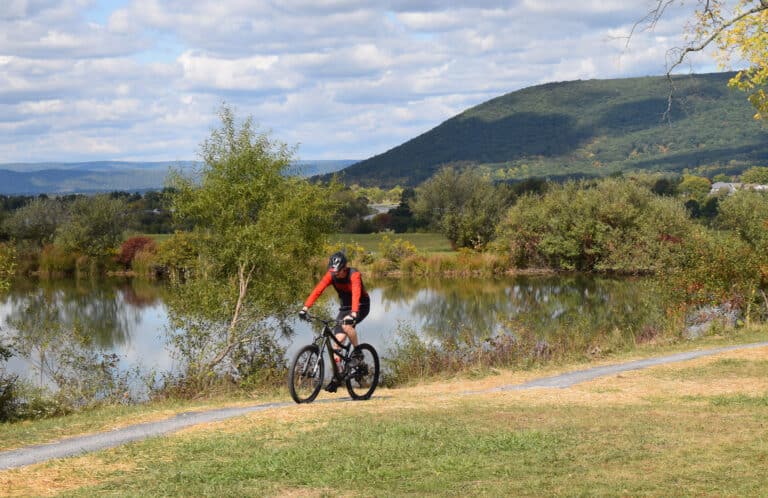The coyote’s successful and stable emergence in the Southeast is also credited to their ability to adapt easily to new environments and the fact that they are opportunistic and vulture-like feeders, eating a diet of anything that comes their way from rodents to rabbits to animal carcasses, according to the state game department.
Coyotes are about the size of a border collie and are slim and rusty red or grey. If you hear a yapping howl in the night, that’s the coyote. They tend to like open land with some forest, according to Rourke, but they definitely like open land to hunt on because they hunt for animals like rabbits, possums and skunks.
“They tend to focus more on the smaller guys. But they’ll take advantage of anything they can. And they will eat fruits and vegetable matters,” Rourke says.
Bobcat The bobcat isn’t seen very often by people in the Blue Ridge Mountains because of its reclusive nature and fear of humans. Bobcats are the size of a beagle—weighing between 10 and 25 pounds—and have a bobbed tail, long legs and big ears. They have sideburns on their cheeks and their fur is a reddish-brown color with black spots and they have a white, spotted belly.
Despite their shyness, bobcats have big attitudes, as is the case with most cats. Rourke says they are feisty and the clinic’s crew usually has to anesthetize them when bringing them into the center. They hunt small animals, such as rodents, and will eat crippled deer during hunting season. Most hikers don’t realize bobcats are out lurking in the woods, because they are skittish and don’t want to be near people. If you come across a bobcat, it will most likely take off and hide, Rourke says.
Mountain Lion A larger, more feared wild cat, the mountain lion is presumed to be roaming the Blue Ridge range, but state and federal agencies have been reluctant to confirm their presence officially.
“I personally think there is plenty of room for them to be out there,” Rourke says. “I’ve never seen one at the center. A few people have seen footprints or heard them from their porch. It’s unclear whether mountain lions are an actual wild population or ones that had been kept as pets by someone and then released.”
For now, the mountain lion remains heresay until land managers officially recognize it as a naturalized species.







